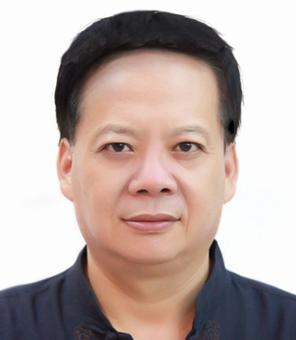Fang Jinping
Fang Jinping
Personal Profile
Fang Jinping is a member of the Chinese Calligraphers Association, a senior calligrapher certified by the Ministry of Culture, Vice President of the Calligraphy and Painting Research Institute of China’s Leading Cadres Network, an intangible cultural heritage inheritor of Chinese calligraphy techniques, a National First-Class Calligrapher, a member of the Shandong Provincial Calligraphers Association, an inheritor of traditional Chinese art, and a master inheritor of Chinese art. He currently serves as Vice Chairman of the Confucius Calligraphy and Painting Research Institute of China, Honorary Chairman of Jinan Yiyuan Calligraphy and Painting Academy, Vice President of the Beijing Kangda Calligraphy and Painting Academy, and Deputy Director of the Calligraphy Committee of Shandong Luyi Calligraphy and Painting Research Center.
Fang Jinping has been passionate about calligraphy since childhood, studying under renowned masters and diligently practicing various classical scripts. He has intensively researched calligraphic theory, focusing primarily on the styles of the Two Wangs, Ouyang Xun’s regular script, Liu Gongquan, and Zhao Mengfu. He studied under the famous calligrapher Lu Shaoju and later received guidance from Li Xiangdong, Zhang Shisen, Zhang Shifan, Wang Xianyue, and other calligraphers. His calligraphy combines strength and grace, penetrates the paper with vigor, unifies form and spirit, exudes power while revealing elegance, and has developed a distinctive personal style.
Fang Jinping has copied the works of the Two Wangs and the four great masters of regular script—Ouyang Xun, Liu Gongquan, and Zhao Mengfu. His works are primarily in regular script, supplemented by running script. However, we do not know the specific sequence in which he progressively studied ancient models. According to conventional learning paths, one should first master regular script to build a solid foundation before advancing to other script styles, especially running and cursive scripts, to avoid losing structural discipline and becoming overly unrestrained. Since ancient times, Ouyang Xun, Yan Zhenqing, Liu Gongquan, and Zhao Mengfu have been collectively known as the four great masters of regular script. Ouyang Xun, together with his son Ouyang Tong, both excelled in regular script and were referred to as “Da Ou.” His regular script, characterized by its balance and hidden peril, is known to later generations as the “Ou Style.”
Fang Jinping’s calligraphy is primarily in regular script, especially excelling in small regular script. Large regular script demands stricter rules, requiring reverse and concealed brushstrokes, whereas small regular script allows direct, exposed brushwork, making it ideal for transcription. Therefore, Fang Jinping often creates Buddhist sutras in small regular script. His works are elegant and vigorous, precise and neat, embodying the solemn dignity of large regular script while also displaying the graceful fluidity of running script—majestic, solemn, and imbued with Zen flavor. Regular script cultivates upright posture and inherently embodies an incorruptible, righteous spirit. Running script, by contrast, is flexible and adaptive, enabling one to connect past and present and respond appropriately to changing times. Fang Jinping excels in both styles—not only are his works rare and valuable, but his noble character also commands profound respect.
para-title
TAG:
Fang Jinping

 中文
中文  en
en 
